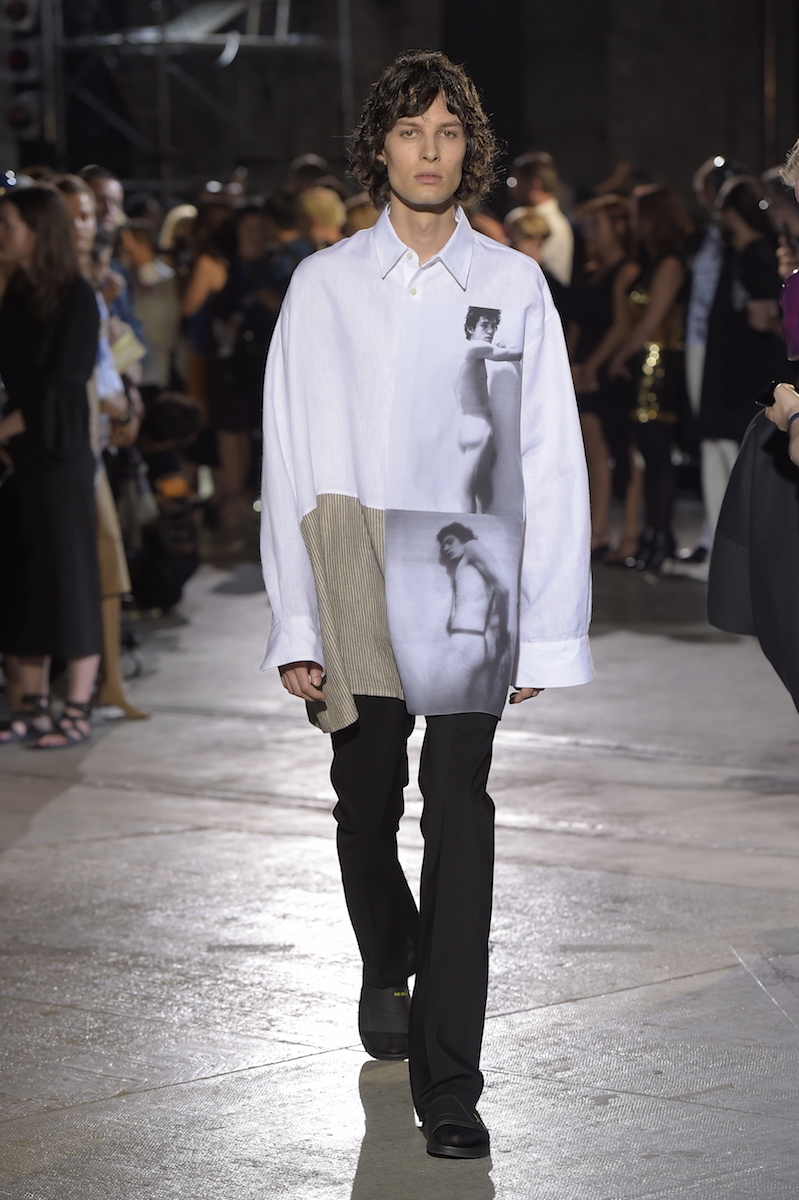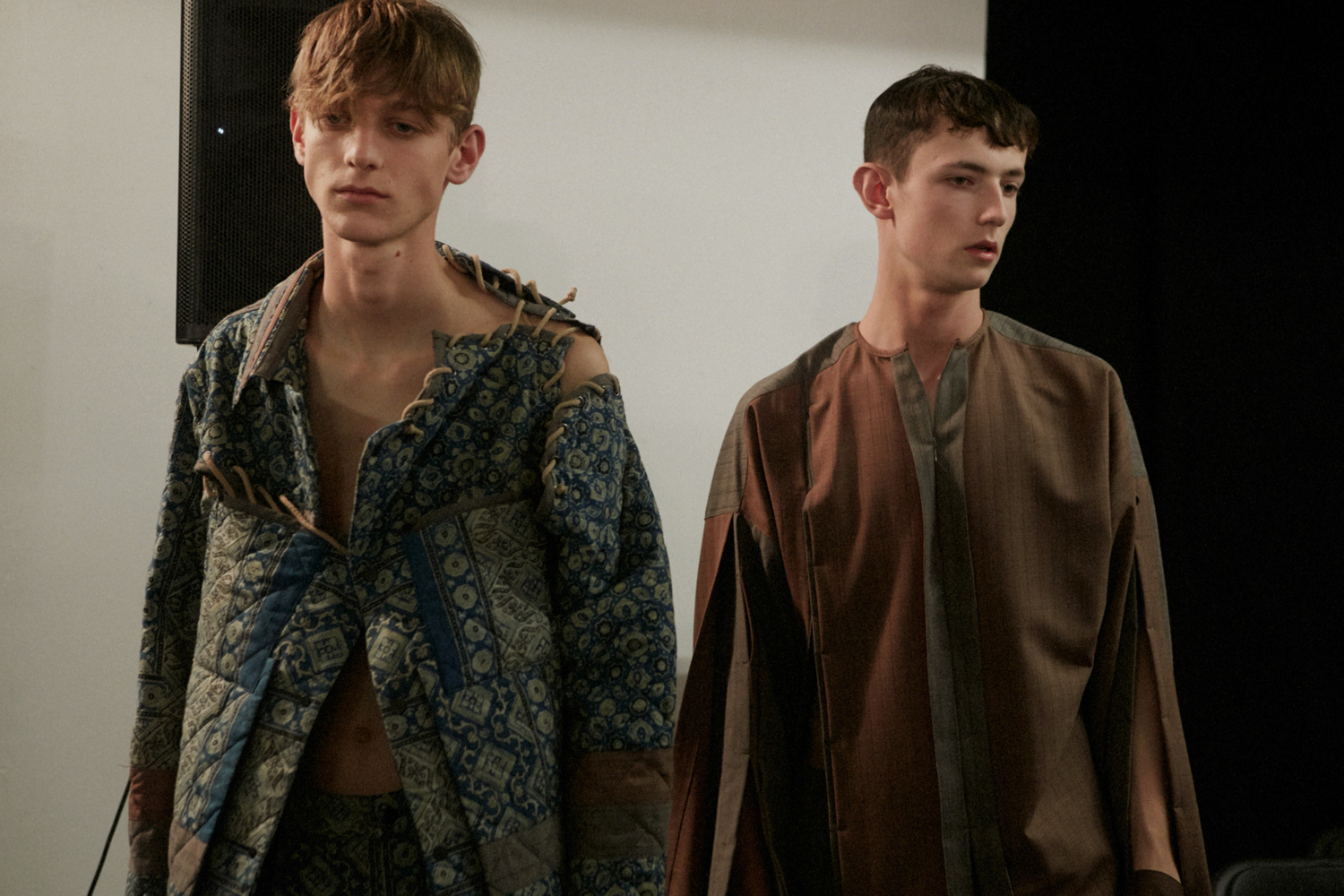Let’s be honest, there’s not a whole lot to be cheerful about at the moment. I mean, you’ve heard it already, but it stands repeating. Brexit, once laughed off to the political fringes has now become a strange, depressing reality, our island nation divided straight down the middle. Far right movements rise across Europe. On top of that, there’s the strong possibility that, yes, Donald Trump may actually been the president of the United States by November. A homophobic hate attack on a nightclub in Orlando. Terrorist attacks in Belgium, Paris, Istanbul. Not much to smile about here. Not much at all.
It was, then, a peculiar setting for the spring/summer 17 menswear shows to take place in. Not exactly, one would think, the ideal climate for which to present a great pack of new stuff for people to buy. Minds, undoubtedly, were elsewhere.
It’s easy to say that fashion is out of touch, the froth that floats upon more important matters. People obsessively try to argue that fashion exists in another universe entirely. But there are very few designers, or houses for that matter, that are completely immune to the reality of the world around them. And anyway, why should we have to constantly justify that clothing is part of the world we live?
This uneasiness seemed to find its way into the menswear schedule. Yes, everyone was looking forward to seeing Raf Simons and Gosha Rubchinskiy in the new setting of Pitti Uomo in Florence, but it left big gaps in the Paris schedule. Saint Laurent had dropped off completely, ready for Anthony Vaccarello’s debut at the women’s show in September. At Gucci, it was their final menswear show before being subsumed into the women’s show later in the year, a precedent set by Burberry, whose boy’s show had already been wiped off the London schedule. Zegna paused between designers, as did Calvin Klein. The list goes on. Was menswear on the out?

But then, a strange thing. The shows begun. There was — dare we say it — a hopefulness. The menswear industry, at least, was facing forward. Some shows were even… cheery. Was it proof that menswear was indeed detached from the world it lives in? I’d disagree. This was a hope that was unsettled and occasionally unclear, but a distraction, a suggestion that beyond the present that we find ourselves in that there could, perhaps, be something more.
In London, it was Grace Wales Bonner, and her eponymous (minus the first name) brand, that set the tone. Once again, as in her previous collections, it was about travel, migration, and the possibilities they afford. A serene, steadfast collection titled Ezekiel after the old testament prophecy that spoke of the promise of a black messiah, it was regal, full of an emotion, power, and poise that belies her youth. A new talent, a new hope. She won the LVMH prize just a week later.
Elsewhere in London, Craig Green showed in the late afternoon. It was hot, sunny — which, in London anyway, was reason enough to be hopeful. Like Grace, his show formed its ideas around travel, this time, pilgrims on a movement towards something better. The colors were rich, pieced together, a tapestry that hung together like the Scout’s neckerchiefs he used for inspiration. What feeds travel more than hope? Whether for necessity or pleasure — travel feeds on that desire for something more than what you have.
J.W.Anderson tapped into a different kind of optimism — the childhood imagination, his boys appearing with crowns upon their heads, dressed in retina-burning colors and in warped silhouettes that seemed to shrink the model’s bodies. As if they were in playing in a dressing up boxes. He said it was based on Peter and the Wolf. Like many fairy tales, this was for now, at least, a happy ending.

Fast forward to Gucci in Milan, which turned out to be less swan song, more statement of intent. Here, under bright green lights, the resounding memory was of those Donald Duck sweaters — the childlike motif combined with a myriad of references suggesting that there’s more to the world than the small circumference which you currently find yourself.
At Prada, a group that has not had the best financial news of late (profits are falling), there was color and travel too. Miuccia’s boys marched forward, uphill, clutching their belongings on their backs. But, unlike the unsettling message of her last show, staged on a panopticon-like runway that echoed the shape of a town hall and spoke of crossing borders, displacement, this time there was color, determination. These were future-facing hikers daubed in rave colors, carrying heaps of product that people are going to be ready to buy come August.
In this midst of all this, somewhere just before Florence, London’s gay community gathered on Old Compton Street to hold a vigil for the 49 LGBT partygoers who were shot dead in Orlando’s Pulse nightclub. The silence spoke of lost hope, lives lost. But then, after the two minutes, a cheer. A defiant cheer. It rang out for a many minutes. It was an assertion of community, a reminder that in the face of adversity people still can connect. In the crowd I spotted two fashion editors, a fashion writer and a menswear designer in the very small patch of Soho I was stood. Many more showed up on my Instagram feed. Fashion doesn’t exist in a vacuum.
Of course, Raf Simons couldn’t have known this would be happening when he put together his spring/summer 17 collection. But it seemed to echo this sentiment somehow by interweaving Robert Mapplethorpe’s photographs into the collection — images of nude men, cocks, flowers — it spoke of collective remembrance. Mapplethorpe died of AIDs, but here, Raf’s ode to the photographer spoke of mending. “I thought that it was really important to juxtapose that kind of sensitive work with the work that we all know, and the work that so many people have criticized him for, like those that feature sex scenes,” he said to French Vogue afterwards.

Queer defiance was there, too, in Hood By Air’s brilliant show, held at Sun City, a gay Parisian sauna. Shayne’s boys swam through the sauna’s pools in thigh-high stilettos, whilst moaning sounds played over the stereo system amongst a fug of chlorine and poppers. It suggested the possibility of new communities, ones that operate far outside the bounds of most people’s consideration of normal. It came too in tinges at Balenciaga, though more hidden perhaps than in Demna’s early Vetements offerings, coming through here in those heeled boots in python and suede, the lace petticoats that poked out from under the tailoring.
And what of those rainbow flags? The ones, waved at the vigil, on Instagram feeds, at Pride events that happened around the world over the last week in Paris. Did they too feed into the collections? Probably a long shot. But that aside, it has also been a long time since so much color has been seen on the men’s catwalks. Color is hopeful. Brilliant touches of vivid pink illuminated Sacai and Diesel Black Gold, whilst electrifying yellow at Hermes provided much needed burst color on the last weekend. And to close? Paul Smith, who’s rainbow-hued collection played out on an equally rainbow-hued catwalk.
So what does it mean? Is it an empty hope? Only time will tell. You can’t help but imagine the complexities of the buyer’s showrooms in Paris and Milan at the moment — will stores risk big orders as the pound falls to a new low in the wake of the Brexit shambles? It’s easy to forget that fashion too relies on trade agreements across borders and freedom of movement epitomized by the EU.
Who knows. But the fashion world has proposed, at least, the possibility of something better. A light, perhaps, at the end of what looks like it’s going to be a long dark tunnel. And, if all else fails and freefall ensues, at least we’re going out on a high. And we’ll have some nice clothes to do it in.
Credits
Text Jack Moss
